There are some temples that have wonderful legends attached to them. Some are rich in architectural splendor, others in the divinity and vibration that they generate. Very few have all these things intact even after several hundreds of years. One such temple is the Yaganti Sri Uma Maheswara Swamy temple.
Yaganti Temple is dedicated to Lord Siva, built according to Vaishnavaite traditions located in Kurnool district in the state of Andhra Pradesh. Neganti is the actual name of this place, which means ‘I Saw’, as time passes by locals started calling by Yaganti.
The magnificent temple commands high reverence not only because of its religious significance but also because it has many striking and unusual features. To begin with, Yaganti is perhaps the only temple dedicated to Lord Shiva, where he is worshipped in the form of an idol, instead of Shiva Linga.
This temple of Lord Shiva was patronized in the 5th and 6th centuries by various Pallava and Chola rulers but completed in the 15th century by Emperor HariharaBukka Raya of Sangam Dynasty of the Vijayanagara Empire.
This temple had glorious time during the 15th century.
The temple is situated aloft the Yerramala hills which lends it an extraordinary setting and extreme scenic beauty owing to which it is often considered one of the most popular attractions in Andhra Pradesh.
The Yerramala hills have numerous natural caves around the temple which have been the abode of many saints over the years.
The three famous caves situated around the temple are the Agastya Cave, the Venkateswara Cave and the Veera Brahmam Cave.
It is believed that Sage Agastya did penance here for Lord Siva. One should climb up 120 steps to reach the cave entrance. Shrine for Goddess Parvathi is located here.
According to the legends, while returning from The North, Sage Agastya came across Yaganti and impressed with the natural beauty around and thought of installing Lord Venkateswara Idol here.
After a little search, he was able to find Vishnu’s idol in a cave nearby and did all the rituals prior installation.
At the time of installation, Sage Agastya noticed that the Idol’s toe nail was broken and stopped the installation. Agastya Rishi was upset and did a penance to know the reason. Lord Siva appeared before him and told him that this place resembles Mount Kailash so it suits for a Saiva Kshetra and that is why he was not able to install the Idol.
Happy on hearing that, Agasthya sought a boon from the Lord that he should ever remain there, along with his consort Parvathi, granting blessings to all those who prayed to him. Pleased with his devotion, Lord Shiva appeared along with Parvathi Devi in a single stone as a Swayambu Ardhanaageshwara.
It is indeed amazing to see the distinct roopas of both Lord Shiva and Parvathi Devi on the Swayambumoorthy in the Sanctum Sanctorum. The two distinct images are also smeared with Vibhooti (Sacred Ash) and Turmeric to distinguish Lord Shiva and Parvathi. It is absolutely an electrifying experience to stand before this magnificient Lord and pray.
Another version of the story is, there lived a Siva’s ardent devotee by name Chitteppa. For whom Lord appeared in the form of a Tiger, knowing this, he started shouting as ‘Negantini Shiva nu Negantini’ which means I saw Siva I saw)
As witness to the legends, The Venkateswara Cave still houses the destructed statue of Venkateswara. It is believed that this Idol was sculptured prior to the arrival of Lord Venkateswara Swamy onto Tirumala hills. The Venkateswara Cave is relatively easier to climb as compared to the Agastya Cave.
The Veera Brahmam Cave is much lower in height and requires one to bend over to enter the cave. Saint Sree Potuluri Veera Brahmendra Swamy had predicted his prophecies (Kala Gnaanam) while staying in this cave.
All these caves are open for worship throughout the day. Artificial lights are provided as there is hardly any natural light available inside.
A very significant and remarkable feature of this temple is that the Pushkarini which is the temple tank consists of sacred holy water flowing from the tank.
The water flows into the pond from the mouth of Nandi (Bull) and comes from the surrounding hills.
The pond is filled with water throughout the year, while the source of its way is unknown till date.
There is another small fresh water pond next to the main temple in which there will be fresh water through out the year.
A very bizarre fact about the place is that crows are forbidden to fly in Yaganti. This is because when sage Agastya was meditating here, Kakusara, the king of crows distracted him from his deliberation and in rage sage Agastya spelled his curse on the crows to prevent them from his entering his premises. Even today, people say that they have never seen a crow within the village.
Moreover, since crow is the vahana (vehicle) of Shani Bagavan, they say that Shani does not bother anyone who is within the vicinity of the Uma Maheswara Swamy temple. People come and worship here to be rid of the dosha of Shani.
Most interesting part of Yaganti is a monolithic Nandi statue which is growing by an inch over the span of 20 years.
Unlike other Siva temples, Nandi is not located right opposite to the Lord Siva’s Idol inside the temple.
It is believed that there is an incessant increase of the Nandi idol. There is also a scientific explanation behind it which states that the rock with which it is built has an inherent property of growing and the Archaeological Survey of India (ASI) has established that it grows 1 inch every 20 years.
It is also a belief that people performed Pradakshinas, rounds around the idol of Nandi years ago. One of the pillars of the temple has been removed due to the increasing size of the idol.
Sri Potuluri Veera Brahmendra Swamy declared in his prophecy that the idol of Nandi would come alive at the end of the Kaliyuga and would shout piercingly. It is also said that, Millions of horses will come from the caves of Yaganti, to serve the Army of Lord Kalki.
Just behind the Veerabadraswamy temple, on top of the hill, on a ledge which looks so steep and narrow, an Akasha Deepam is lit every evening.Every day temple priest lit lamp using 4 litres of oil and 2 meter thick wicks.
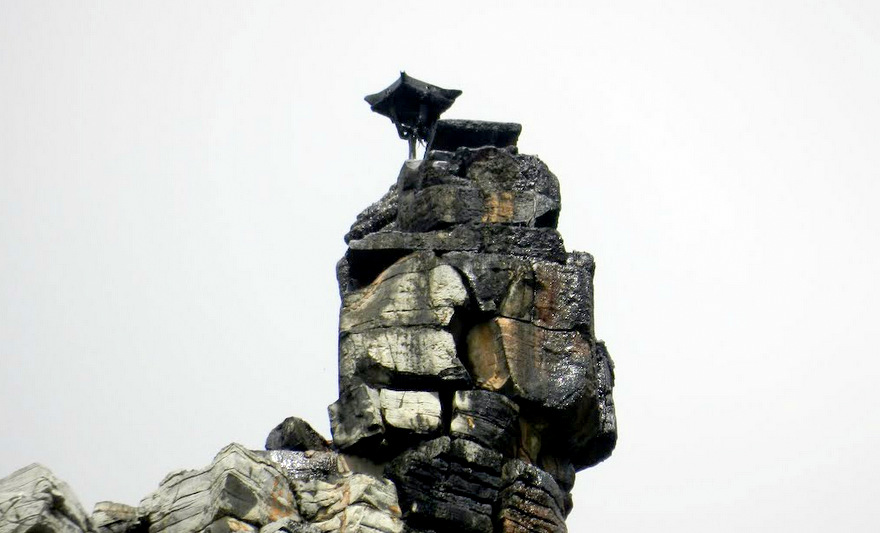 The lamp glows from 6 am – 6 pm in an open air on top of the hill. It is indeed amazing how the lamp burns in the open air on top of a hill, amid the strong winds blowing.
The lamp glows from 6 am – 6 pm in an open air on top of the hill. It is indeed amazing how the lamp burns in the open air on top of a hill, amid the strong winds blowing.
The festival of Maha Shiva Ratri which falls around February each year is celebrated with great pomp and show at the temple. Tourists and especially devotees of Lord Shiva flock to the temple in huge numbers during this time.
Temple Timings: 7 am to 11 am after which lunch is available free till 2.30 pm at the Annadana Hall 5 pm to 8 pm again dinner available free till 9.30 pm

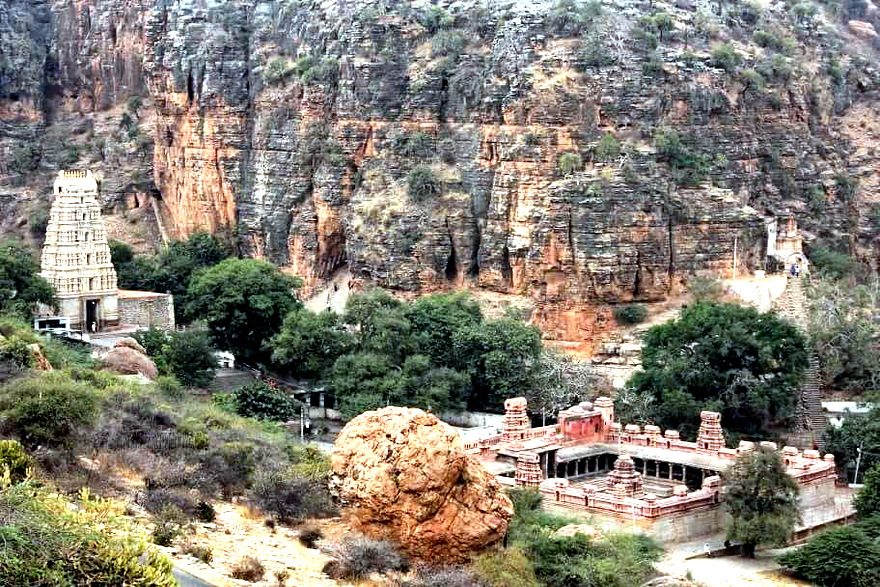
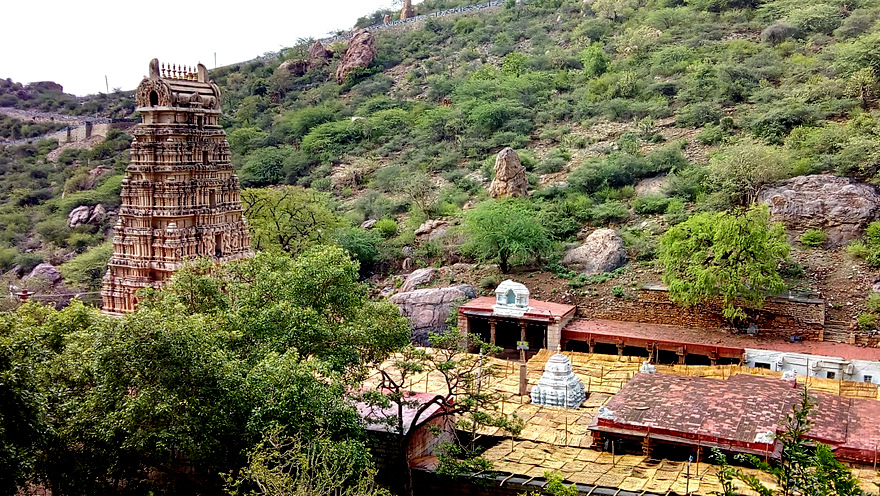

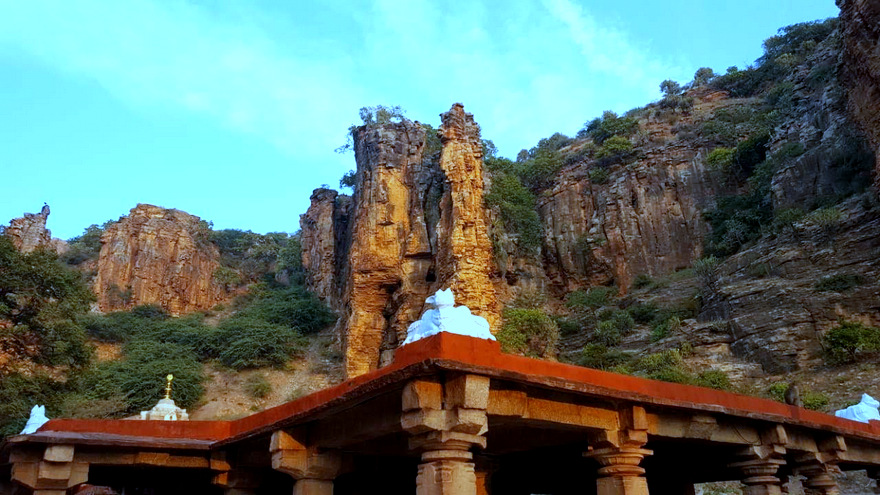

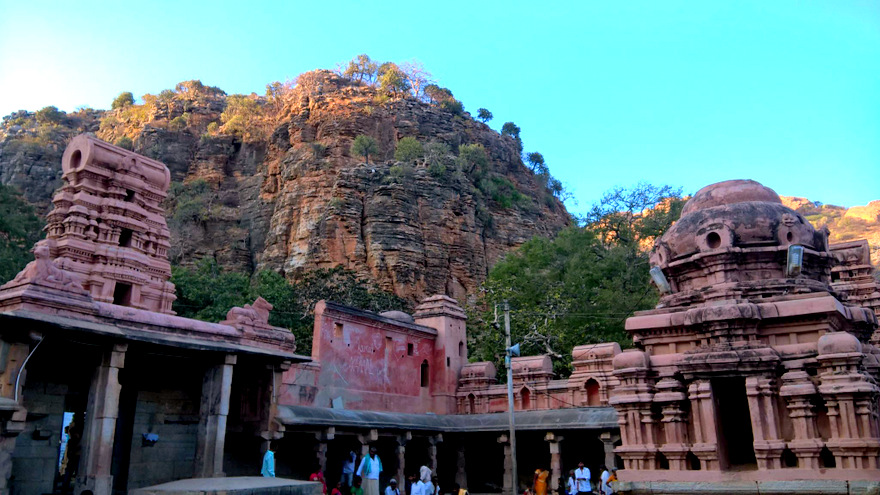
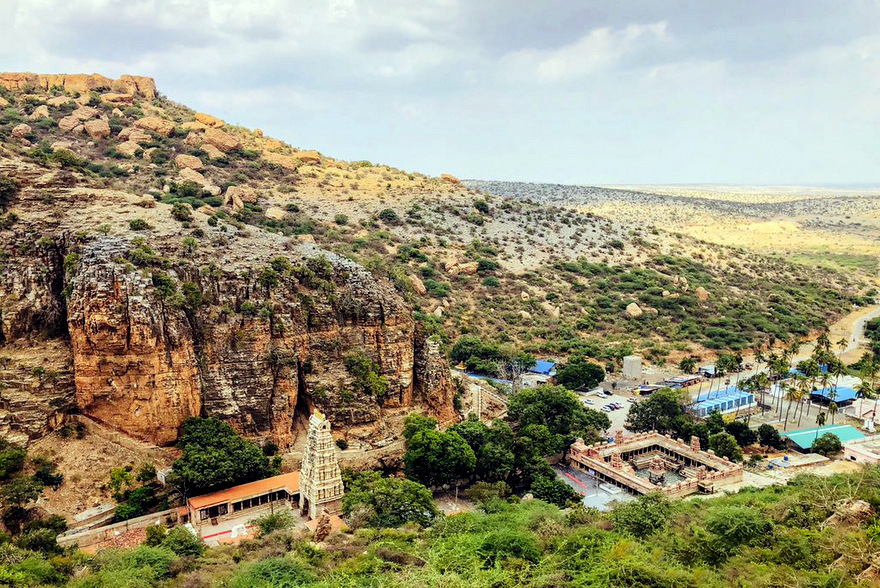
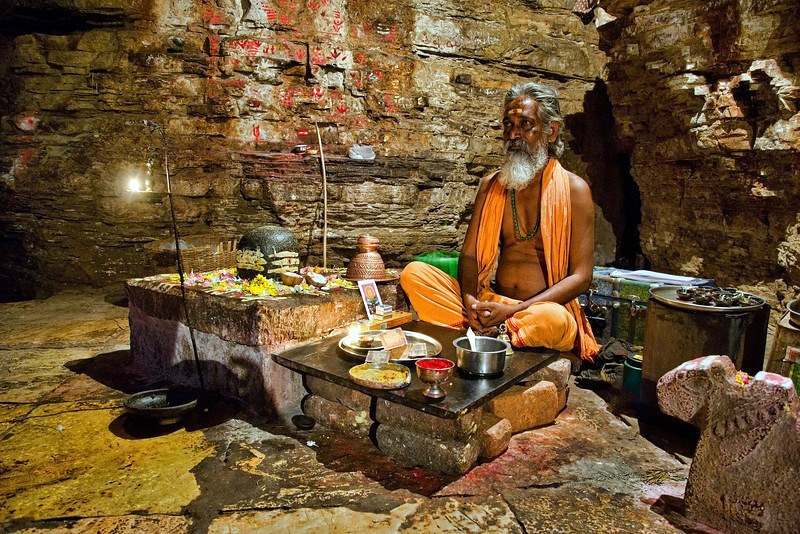
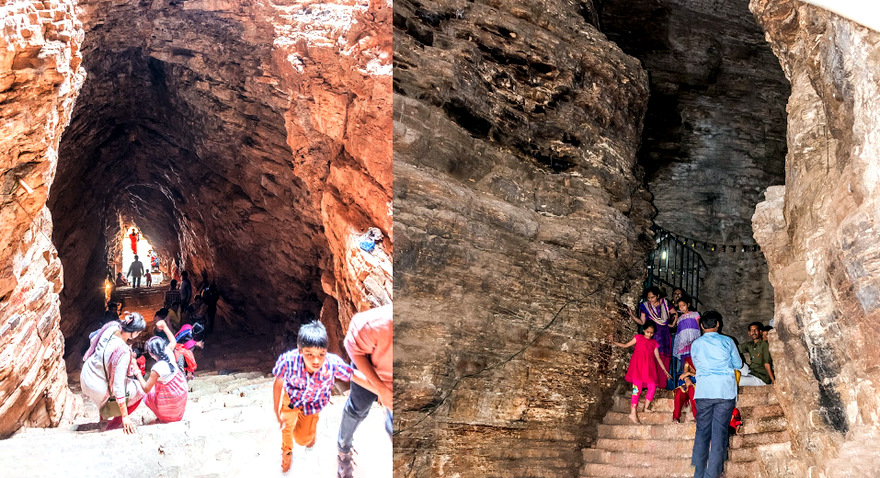
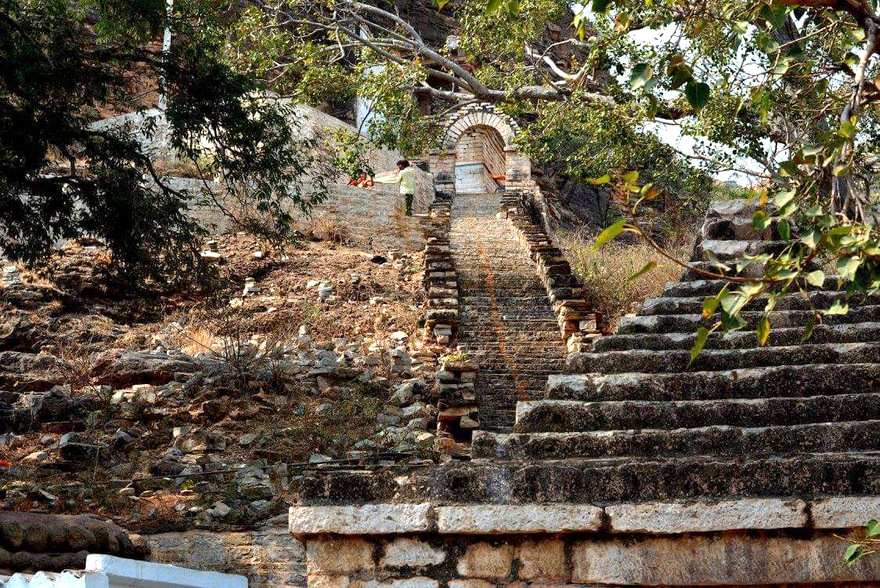
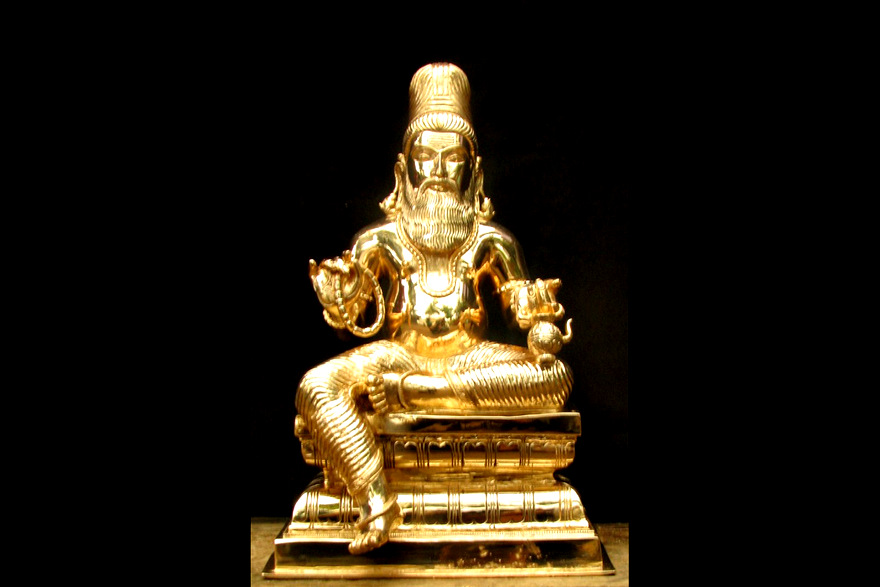
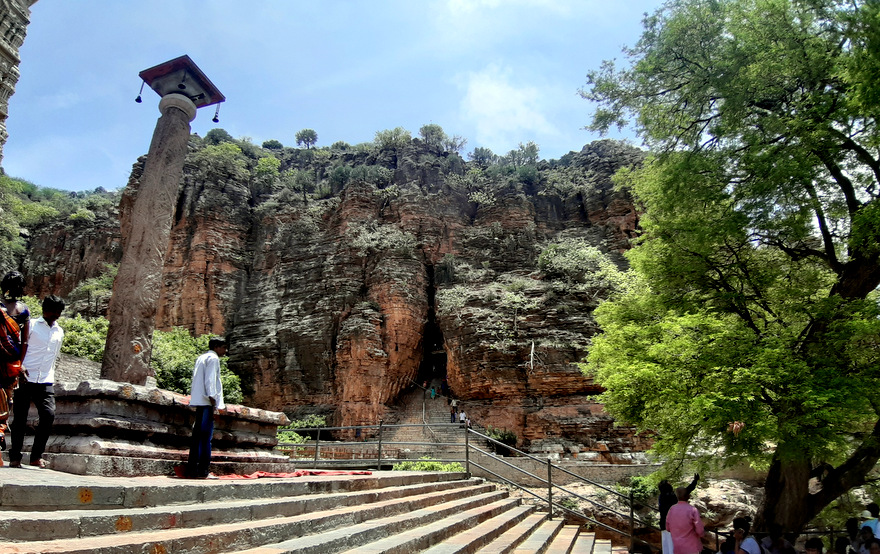
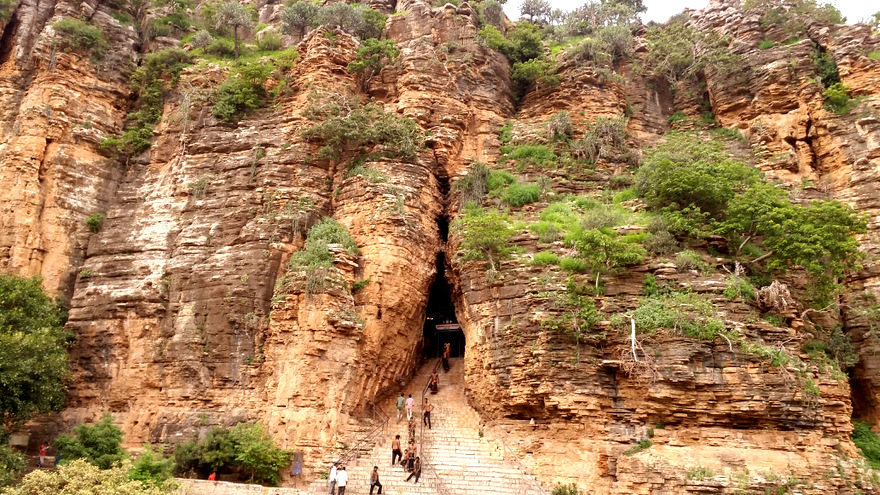

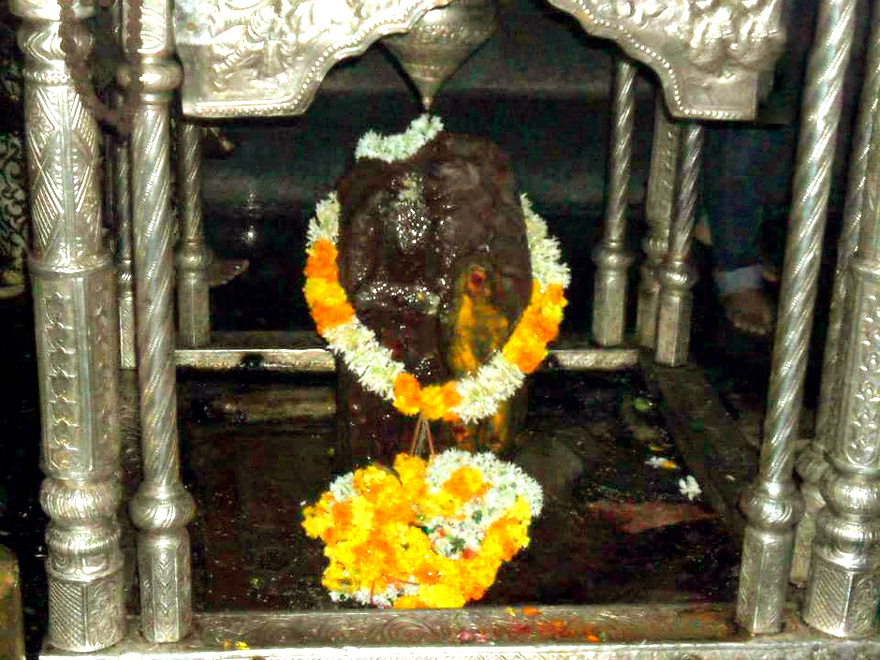
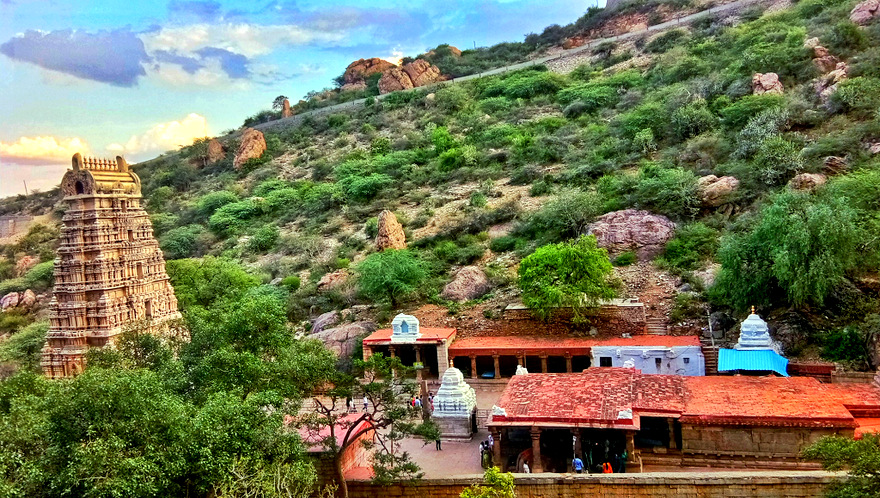

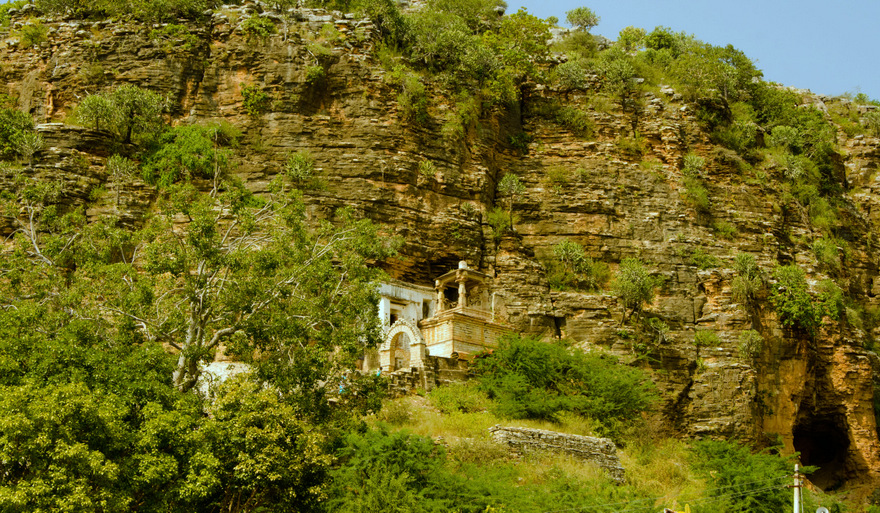
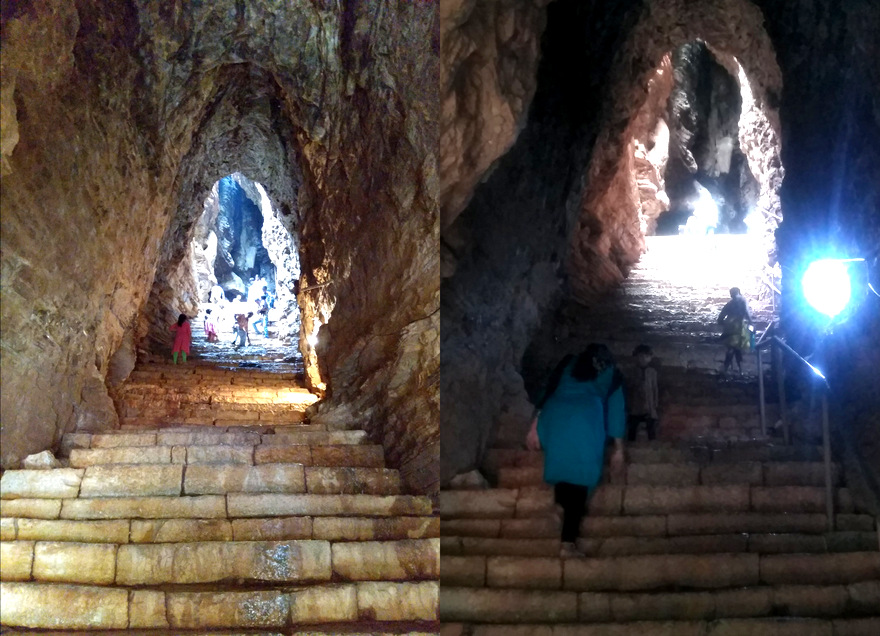

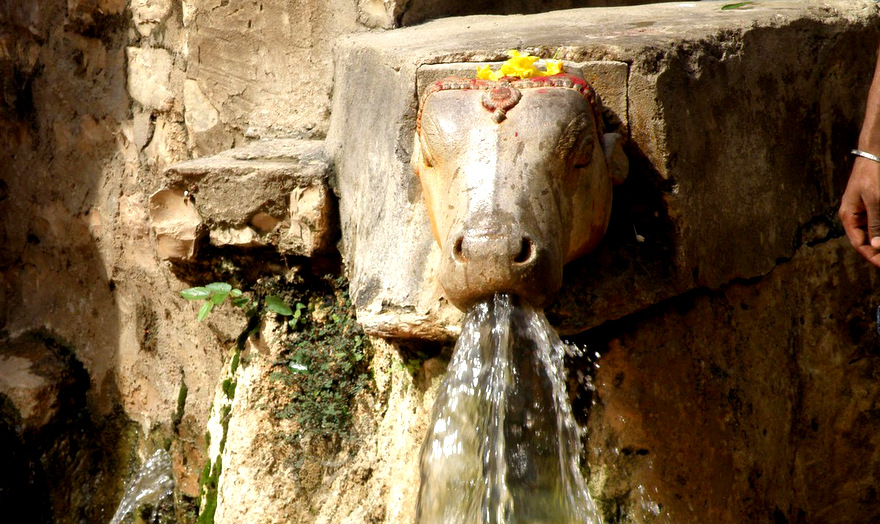
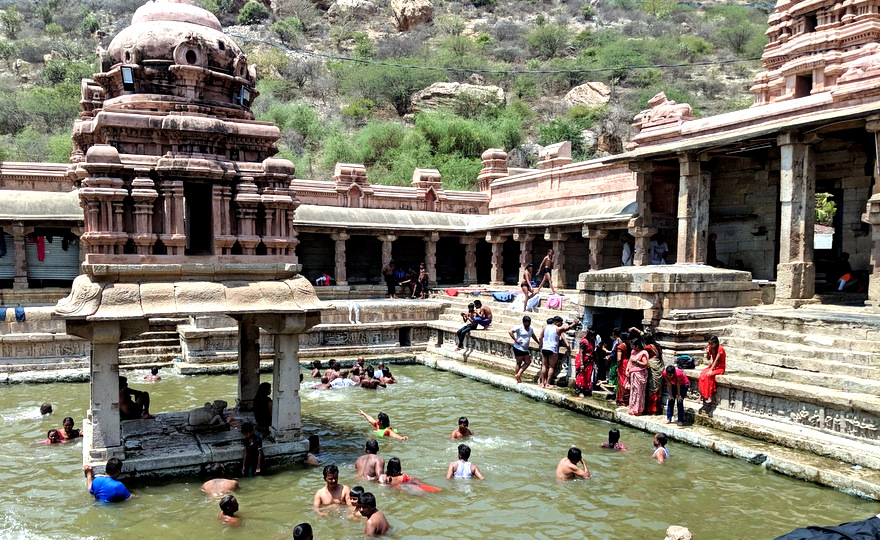
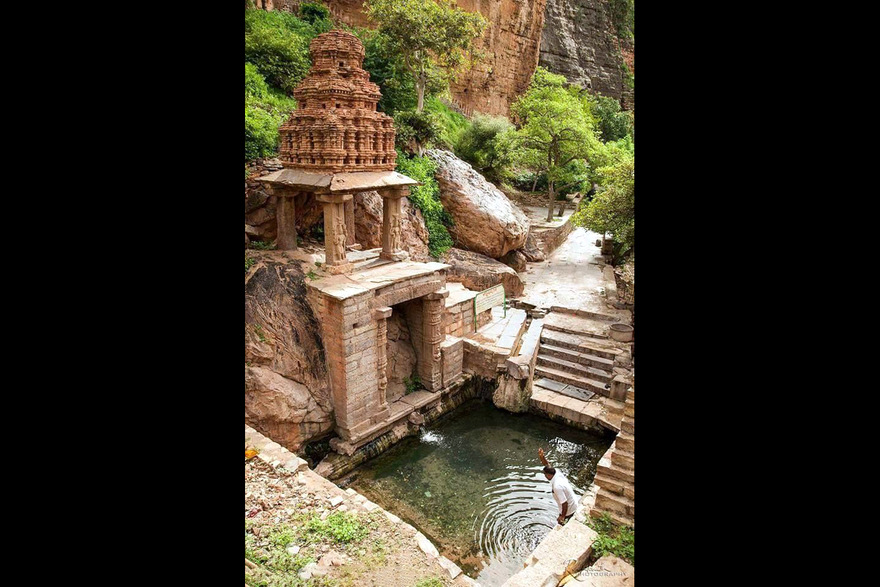
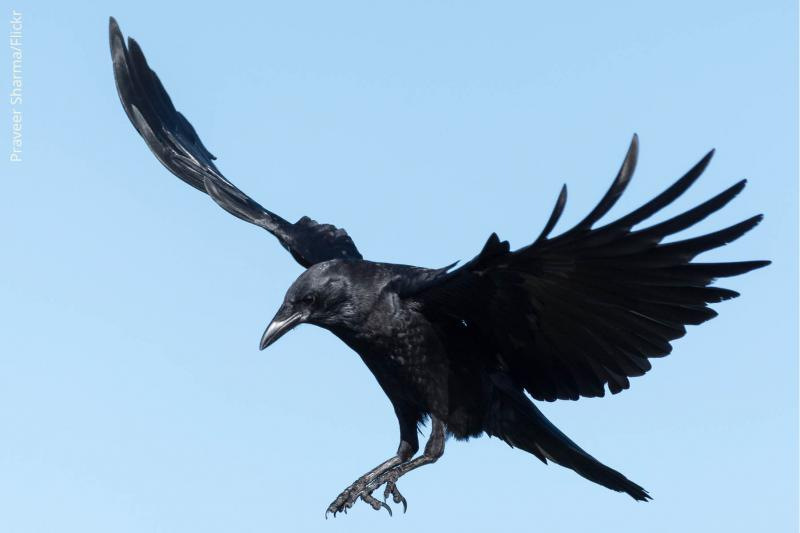
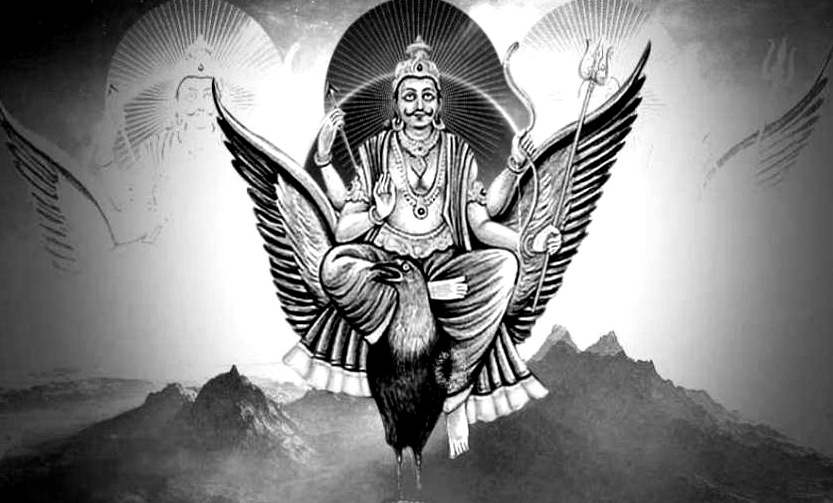
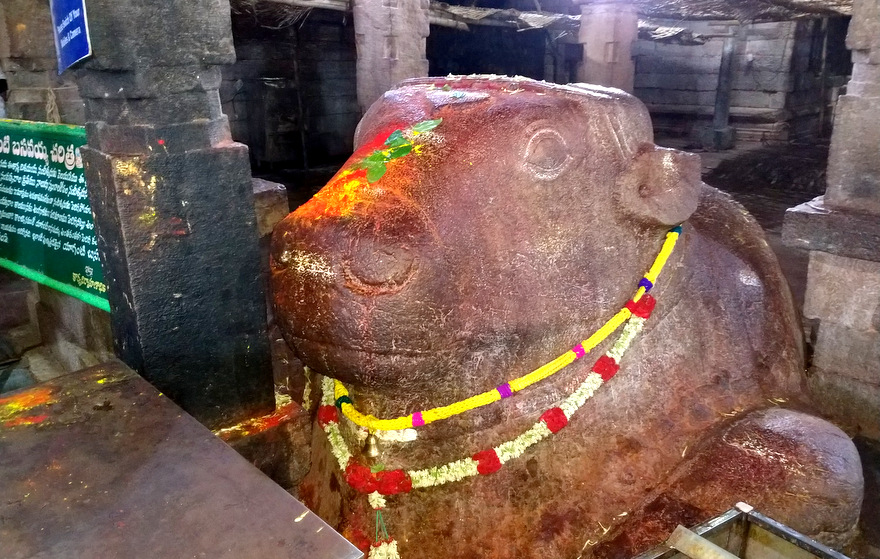
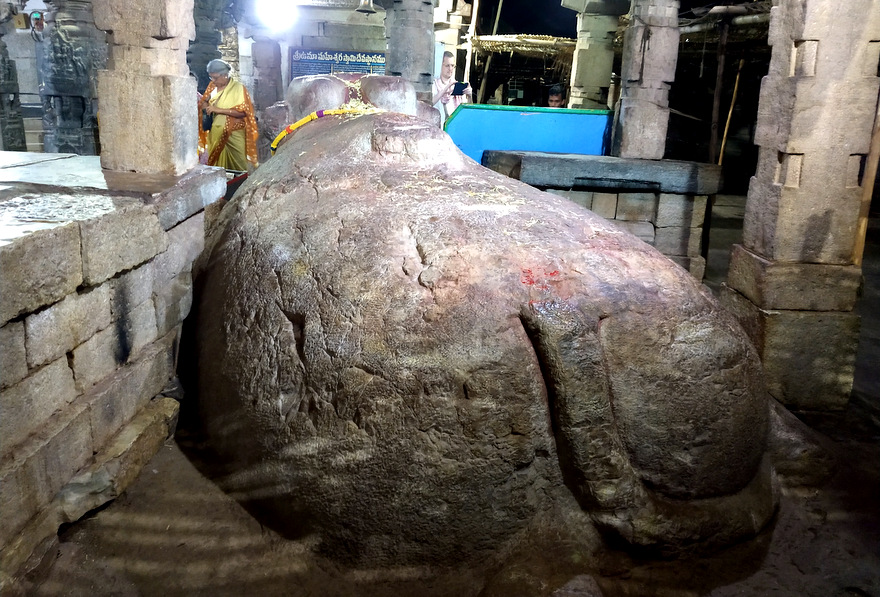
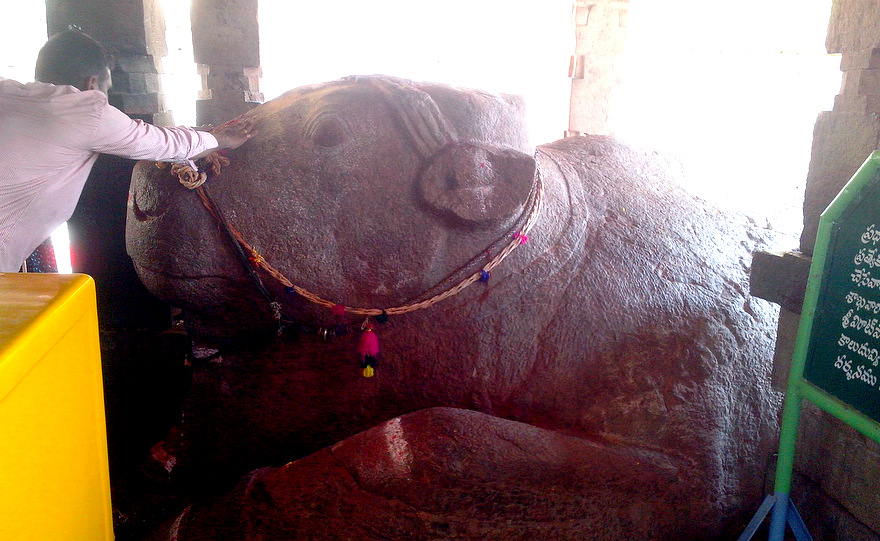
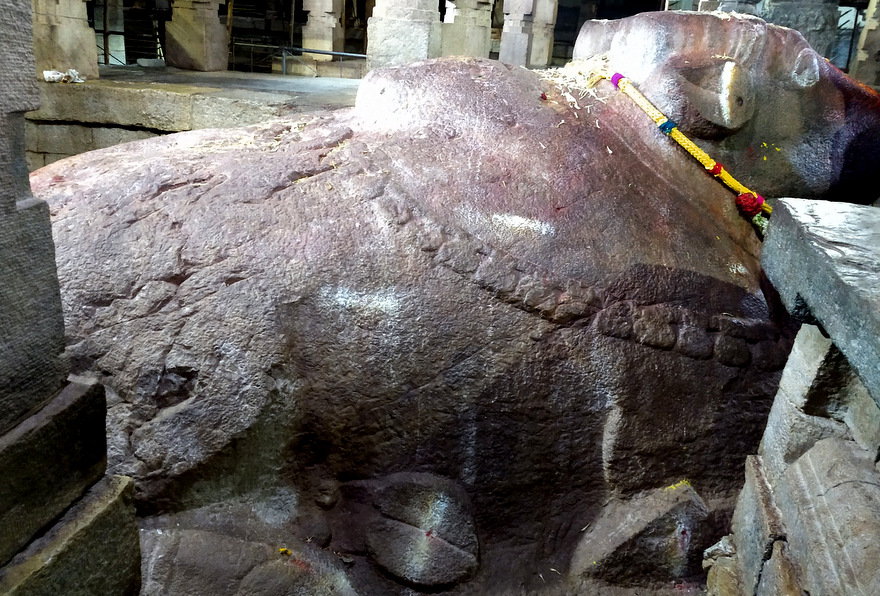

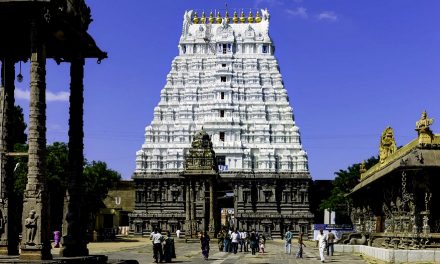
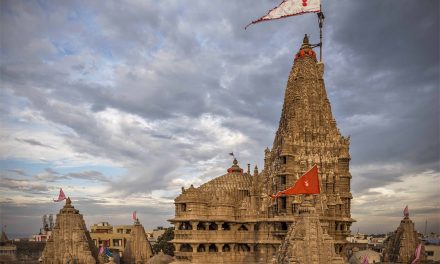
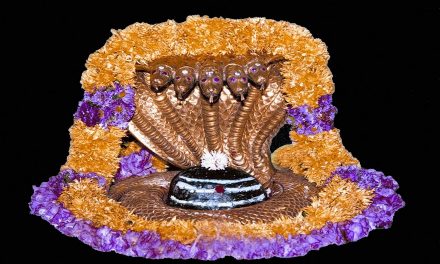
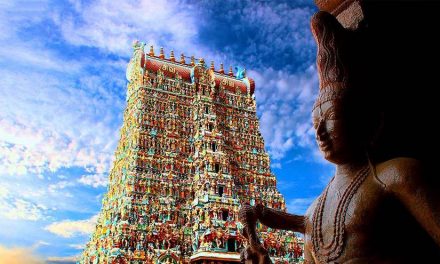









Very nice.Glad to learn about this temple.
Are there any hotels to stay?
It is a most amazing place!
Very interesting factual story of Lord Shiva in Umamahesvra temple. Very good narrative..Thanks.
Maha Siva Rathri occurs during Feb/March & not in Oct/Nov.
There are few temples in other places where the moolasthanam (Moola Vighraham) is in idol form & not in Lingaakaaram. Eg., are : Lord Nataraja in Chidambaram & Lord Thyagaraja in Tiruvarur both in central Tamilnadu. Both the vighrahams are said to be in pure solid gold.
NICE
Excellent information. I must plan and visit this temple very soon.
Very nice article. Will definitely go this temple when in Andhra
Very Informative.shall visit if Lord call me
Very useful information.
very interesting to read the historical origin of the Uma maheswaraswamy temple. beautiful Place and it is heartening to note that the Temple is open all through the year and all poojas are being performed!
You have mentioned the location as kurnool but it will be useful if you give google Map detail, so that all , who want to visit the historical temple can do so!
Very informative article.
how great and auspicious is our country! so many places with unbelievably religious mysteries to reveal. AND YET ALL HAT HAS TO BE GENUINE, FOR THERE CAN BE NO SMOKE WITHOUT A FIRE!
Thanks for enlightening.
Thank you for the thorough article.
I have a request of you.
Can you please stop using the word IDOL and use the word MURTHY or DEITY?
IDOL means false god and the abrahamic religions have used it as a means of denigrating us and our sacred deities.
what a great article. i loved reading it. wish i had known about this temple when i lived in india years ago. i love shiva and nandi.
A sacred shrine with inexplicable and magical personifications. This country of ‘ARSHABHARATHA’ has many mysteries still unrevealed.
Nice coverage of the Temple and the greatness of the place with beautiful illustrations. A line on how to reach this place from important places like Bengaluru or Hyderbad may be furnished for the benefit of visitors.
What an excellent description and illustration of the beautiful temple of Lord Shiva.. The photos have taken us to the actual spot it self. Thank you for sharing the information. God bless you.
Very descriptive and informative. Tucked in my list of soon to visit temples of south India. Thank you.
Amazing story, nicely narrated. Must visit place.
Thank you for giving precious information for the people so far who will not visit the place.
Now, the new era of Hindu revival and regeneration has began. Let us contribute our funds and selfless services for the restoration of these invaluable relics of our heritage.
What an excellent description and illustration of the beautiful temple of Lord Shiva.. The photos have taken us to the actual spot it self. Now eager to visit the place. Please give the routes by bus, own vehicle or train.
very important information, Om Namashivaaya
every man must be visit this temple before his lifetime
It is very interesting and useful information given in this article.